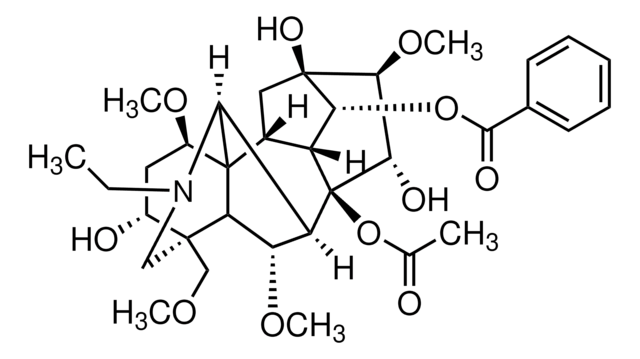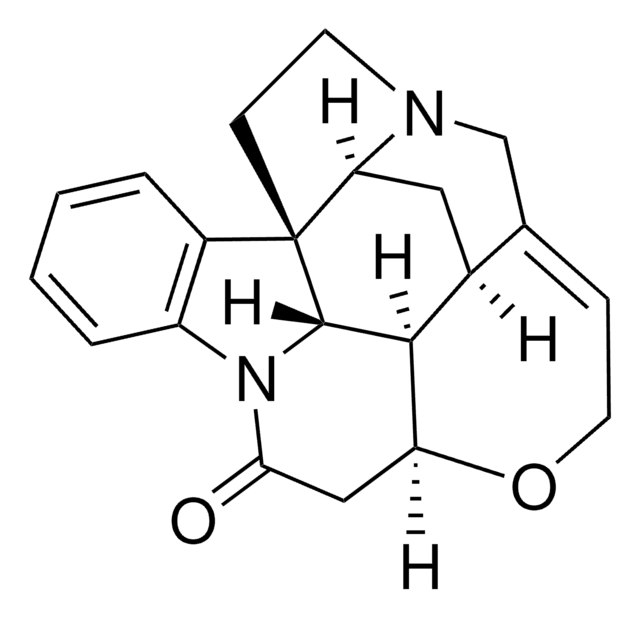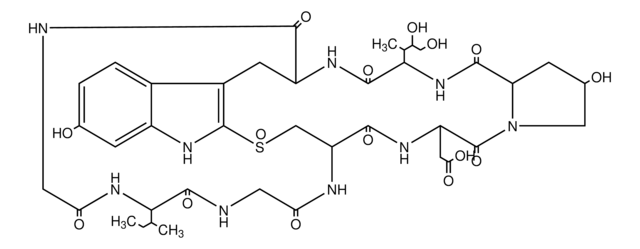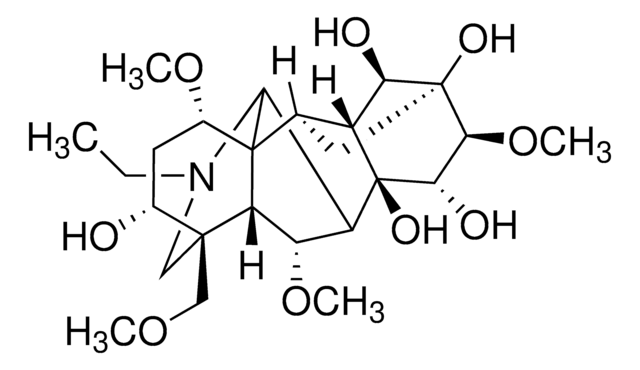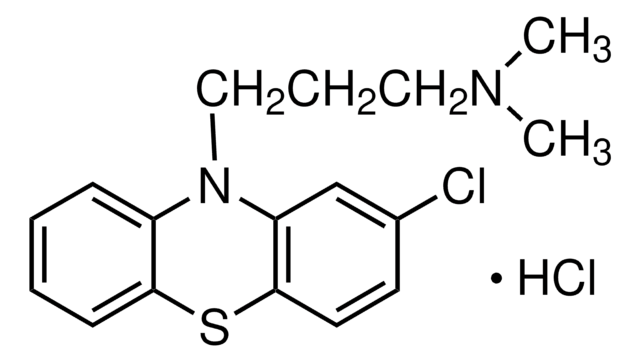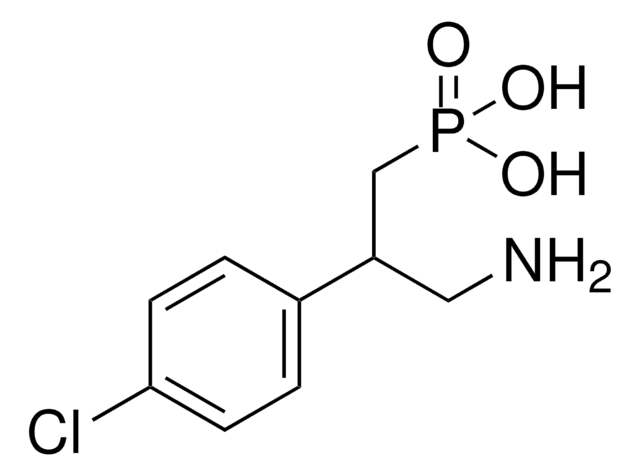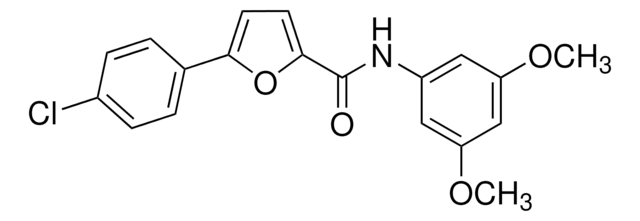A8001
Aconitine
≥95% (HPLC), crystalline
Synonyme(s) :
Acetylbenzoylaconine
About This Item
Produits recommandés
Essai
≥95% (HPLC)
Forme
crystalline
Couleur
white
Solubilité
H2O: 0.3 mg/mL
ethanol: 35 mg/mL
Chaîne SMILES
CCN1C[C@]2(COC)[C@H](O)C[C@@H](OC)C34C5C[C@]6(O)[C@@H](OC)[C@H](O)[C@@](OC(C)=O)(C5[C@H]6OC(=O)c7ccccc7)C([C@H](OC)C23)C14
InChI
1S/C34H47NO11/c1-7-35-15-31(16-41-3)20(37)13-21(42-4)33-19-14-32(40)28(45-30(39)18-11-9-8-10-12-18)22(19)34(46-17(2)36,27(38)29(32)44-6)23(26(33)35)24(43-5)25(31)33/h8-12,19-29,37-38,40H,7,13-16H2,1-6H3/t19-,20-,21-,22-,23+,24+,25?,26?,27+,28-,29+,31+,32-,33?,34-/m1/s1
Clé InChI
XFSBVAOIAHNAPC-VBUFWTEXSA-N
Vous recherchez des produits similaires ? Visite Guide de comparaison des produits
Application
- to study its cardiotoxic effects along the pericardium meridian (PM) on cardiac rhythm in rabbits
- as a standard in high-performance thin layer chromatography (HPTLC) fingerprinting method
- in the aconitine-based lipo-alkaloids semi-synthesis
Actions biochimiques/physiologiques
Mention d'avertissement
Danger
Mentions de danger
Conseils de prudence
Classification des risques
Acute Tox. 1 Oral - Acute Tox. 2 Inhalation
Code de la classe de stockage
6.1A - Combustible acute toxic Cat. 1 and 2 / very toxic hazardous materials
Classe de danger pour l'eau (WGK)
WGK 1
Point d'éclair (°F)
Not applicable
Point d'éclair (°C)
Not applicable
Équipement de protection individuelle
Eyeshields, Faceshields, Gloves, type P3 (EN 143) respirator cartridges
Faites votre choix parmi les versions les plus récentes :
Déjà en possession de ce produit ?
Retrouvez la documentation relative aux produits que vous avez récemment achetés dans la Bibliothèque de documents.
Les clients ont également consulté
Notre équipe de scientifiques dispose d'une expérience dans tous les secteurs de la recherche, notamment en sciences de la vie, science des matériaux, synthèse chimique, chromatographie, analyse et dans de nombreux autres domaines..
Contacter notre Service technique